This week on the Naked Scientists, we've gathered a panel of pollies, pundits and professors to answer your science questions: from how prevalent was tooth decay in the neanderthals, to how Neil Armstrong got home from the moon!
In this episode
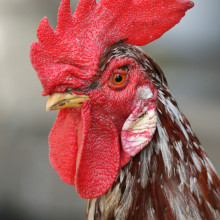
Can a cockerel lay an egg?
Kat Arney put this question to Chris Smith...
Chris - Well to be honest Kat, I think this is a bit more cuckoo than cockerel. There's not really any evidence that a male bird, which is what a cockerel is, ought to be able to lay eggs actually.
What is an egg? Well it's basically a pre-made incubator. It's a hard shell with albumen (that's the white) and a yolk in the middle, which is your embryo; it's fat that the embryo's going to consume.
Male's provide sperm that fertilise eggs - they don't produce eggs themselves, so I don't think there's any evidence for this. It probably is more folklore because, going back in history, there is a story that people used to occasionally find what they call blind eggs (these are eggs with no yolks in them) and anecdotally they said "oh, they've come from the cockerel." No evidence for that.
What's probably happening is that when a young chicken is beginning to establish it's laying cycle, it occasionally produces eggs that are all albumen (the white stuff) and no yoke; this goes away as the egg production inside the chicken becomes more established.
But male chickens have got all the wrong machinery, all the wrong bits, to make eggs - they can't do it.
Kat - A friend of mine started keeping chickens and quails. And she sent her husband off to get some quails and he met a guy in the pub whose like "Ah, I've got this box of live quails do you want them, they're really cheap." And he said "yes, brilliant" and they got them home and wondered why they weren't laying any eggs. and they were all male. So, yes.
Chris - I had another friend who said "the best thing to do if your chickens are going off to lay is you feed them curry." So they fed these chickens all of his leftover curry and then one of the chickens looked a bit unwell. So they took it to the vet and the vet said "it's gone into a korma!"
Kat - You're listening to the Naked Scientists. Our forte is science and not comedy...
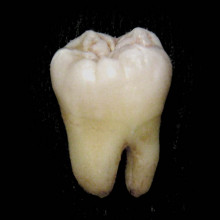
When did humans develop tooth decay?
Kat Arney put this question to Cambridge archaeologist Margarita Gleba...
Margarita - Right, I think I know where this question comes from. There was a study, just a couple of years ago by Dr Alan Cooper and his team of the Australian Centre for Ancient DNA, and they were looking at genetic material trapped in dental plaque (known as calculus) from skulls spanning from hunter gatherers, so we're talking Paleolithic period before about 10,000 BC, farmers from the Neolithic so this is from 10,000 to about 5 to 4,000 BC, and all the way through to modern humans. This material contained microbial DNA which allowed them to build a picture of how and why the microbes that we contain in our mouths have changed. The two main species for bacteria that are known to contribute to tooth decay, or carriol disease, appear in humans only with the advent of Neolithic, so with the appearance of farming. It seems a straightforward relationship but, actually, it's not as easy as that because we have evidence from contemporary societies that consumed a fair amount of sugars in their diet but do not have tooth decay like the Neolithic farmers did and unlike the Paleolithic hunter gatherers who supposedly had very good teeth because they were consuming lots of meat and very little sugar.
Kat - So, in theory, they would have had better looking teeth and the idea of our ancestors with these horrible, hairy faces and horrible, teeth isn't actually true? They probably had.
Chris - Not just you Kat.
Kat - Well I know - you know my ancestors. But they actually probably had quite nice teeth.
Margarita - Well, supposedly they had better teeth and, at least, the skulls that are preserved from those periods seem to indicate that they were in pretty good shape. Much better, in fact, than even our own teeth. We have terrible teeth compared to hunter gatherers, actually. But to go back, actually to the question - what caused the tooth decay in the early farmers. It is not the sugars but, actually, the starches, and starches are recognised today but a lot of dentists as also the main cause of tooth decay.
Chris - Because what - starch gets metabolised into sugar - doesn't it?
Margarita - The starch yes, exactly, but it sticks to your teeth, and it's not just any kind of starch; it's the grain starches that do and if you think that the transition to farming and consuming grains, that would have been the major switch in human evolution. Kat - I eat eggs, and my teeth are as great as they are...
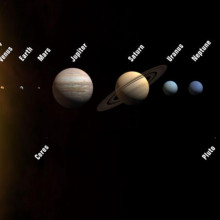
Is everything in space spinning in the same direction?
Kat Arney put this question to Cambridge astronomer Matt Middleton...
Matt - Okay. So the basis of this is conservation of angular momentum, which most of us will probably be familiar with if we watch Tom Daly dive, and hopefully win gold at Rio. Kat - It's all about the angular momentum, obviously.
Matt - Is it really. So, as a diver, be it Tom Daly or any of the other favourites, tucked in they spin around faster, if they open up they spin around slower, so thats conservation of angular momentum in action. Chris - The other example is a ballerina.
Matt - A ballerina is a really good example...
Chris - A ballerina or an ice skater when they're doing a pirouette.
Matt - Chris, whatever you're the biggest fan of really. Kat - Anyway, back to the physics. We've got things spinning round.
Chris - Other heavenly bodies to talk about out in space Matt, yes.
Kat - So we've got stuff like spinning round?
Matt - Yes, okay. So a star forms from something called a protostellar disc. So you have a molecular cloud - these big things everyone's probably seen pictures of something like the Horsehead Nebula. These beautiful massive columns of gas and then, eventually, a star will form when the gas cools and it actually begins to rotate. When it begins to rotate it actually flattens and forms a disc and in the centre you've got a newborn star. That disc is rotating and it's going to be rotating in the same direction that the star is rotating because you're conserving angular momentum.
Kat - What makes it start rotating in the first place. Is it just like whatever random wobble is there?
Matt - It's random motions that start because you start hitting things over and over again. They all start moving with the overall angular momentum.
Chris - It's like the average. That all the particles that come to the party to make the star, they add all of their own bit of spin and the average, when you sum it all up, some going one way, some going the other, will end up being in one direction, another band...
Matt - It all part of that collapse and that movement is a . yes. Kat - But within that kind of solar system would all the planets be spinning the same way? And what about our own solar system - is everything spinning the same way in our own solar system?
Matt - So many questions. Okay. So, this disc of gas it cools, it forms planets. They have their own little discs and therefore they're going to be travelling in the same direction. So, in a perfect scenario you'd have a star in the middle rotating in one direction. The planets will then also all be going round in the same direction, the same direction that disc was going and the planets will also be spinning in the same direction as the central star. But - and I can use Chris as this. Chris look at me. Okay.
So for me, I'm rotating this clockwise but what direction does it look like for you?
Chris - Well you're turning a biro over and over in you hand and you're saying.
Matt - It's not a biro it's an ink pen.
Chris - Okay and ink pen. You're turning it over and over in your hand - for you it's clockwise for me it's the other way round. It looks like it's turning anticlockwise.
Matt - So the way it looks to us is just a matter of perspective. To say that everything is spinning in the same direction, it doesn't really have any meaning. You have to put it in the perspective of the observer. But going back to our own solar system, there are, in fact, two planets that do not spin in the same direction - Venus and Uranus). We believe that they've just encountered another body.
Kat - Kind of like billiard ball smacking together? They've then spun off the other way round?
Matt - Yes. So, Uranus actually spins almost on it's axis and Venus spins in the other direction and so they may have well encountered in the very early period of our solar system another body may have struck it, it's transferred angular momentum, it's now spinning in a different direction. So certainly in our own system there's evidence that things don't have to spin in the same direction. Kat - Fair enough...

Why do dogs turn in circles before lying down?
Kat Arney put this question to ecologist Felicity Bedford...
Felicity - It's actually something that is coming back from the time when they were wolves or wild dogs and they had to build a nest. Chris - So it's like the canine equivalent of pillow plumping - is that what you're saying?
Felicity - Precisely. In the wild there would have been grass or snow, so they're literally creating themselves a safe place to plonk down for the night. A lot of people might also notice that their dog tends to dig at their beds. So that might be creating a hollow and they will only settle down really once they've established their little routine. Instinct has been settled and they'll go down for a nap.
Chris - One person said to me that it might be that also by turning circles it's forcing them to survey the landscape and they might spot predators or areas that are risky. That something could come and attack them so it kind of makes sure they're aware and vigilant.
Felicity - There's probably something in that. It could be that the process of walking around scares off anything that might bite them - snakes, large insects in the undergrowth that they're settling down in. There are so many reasons for this behaviour but back in ancestral genetics.
Chris - I don't turn circles in my bed when I got to bed. I just sort of pat the pillow. Is that what you do, Matt?
Matt - No. But I've got to ask because Kat asked me. Did they all turn in the same direction?
Felicity - Mmm. Now there's something that needs testing.
Chris - I don't think they do because, unlike humans which are strongly biased to be right handed (90% of people are right handed, 10% left handed), in the animals world it seems to break down 50/50. They do have a side bias (one paw or fin they prefer using) but, on average, you get a 50/50 bias. The exception seems to be kangaroos which appear to be dominated by left hand use and we don't really know why.
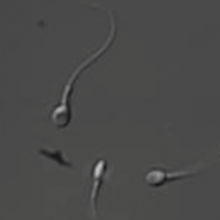
Has male sperm count fallen since 1950?
Kat Arney put this question to Dr Chris Smith... Kat - Chris Smith, you're a medical doctor. How much has the sperm count been declined by since the 1950s? And do we know why?
Chris - This story originates from a study by the Danes in the early 90's and they compared sperm counts collected around the time of the Second World War with contemporary sperm counts, and they reckoned there had been a 50% decline in the samples they were looking at. A subsequent French study, coming about a decade later, suggested that not quite 50% but there was a similar big reduction in sperm counts. Some studies in Italy bucked the trend and they didn't find any decrease in their population but then the Italians, they like to be a little bit different don't they, the Italians. So, on average, we think there might be something in this. Also, if we look in the animal world, we see that there are reports of fish in waterways being exposed to human hormones and also other chemicals changing sex and we can see male fish developing female sexual characteristics. We've also got studies of shellfish on beaches, which have been exposed to sewage outflows and you see some of these shellfish developing some other evidence of being sort of transgender.
Now this appears to be because of exposure to various hormones and things. The evidence for that is that, between about the 1950s and the 1970s, there was a trend to give women after they had babies or while they were pregnant a chemical called diethylbestrol (DES). This was a synthetic form of oestrogen and it was done to do various things, including reduce the amount of milk that the breasts made to avoid mammary engorgement which could be uncomfortable. But when those women had children grew up and they looked at those children, some of those children had genital abnormalities, if they were boys. And this suggested that if you were exposed as a boy during development to oestrogen or oestrogenic-like chemicals, it can have consequences for your fertility. So, what the scientists are speculating is that we don't know why, but there may well be sources of oestrogen-like chemicals coming at us from the environment. Tests on drinking water don't show the levels are very high in Britain - that's not necessarily true in other countries. But certainly food, because of the exposure to animals to the environment they live in, the packaging of food - plastic is in lots and lots of packaging and plastics do release chemicals that can have molecules in them that look like the oestrogen molecule, and they can bind onto the receptor that oestrogen would stimulate - that could well be having this effect.
So the jury is out. We think that the effect and the observed effect is real. We don't know the chemical reason exactly, but we suspect some kind of environmental exposure that everyone is succumbing to because we are living in this world where these plastics are ubiquitous.
Kat - Have we still got Tim on the line. Does that answer your question Tim?
Tim - Yes. Fascinating, yes. I shall go and make sure that my cheese is packed very carefully in the fridge.
Kat - I think the safest thing to do is just eat it all. That would be my scientific advice. Thank you very much for calling in.
Tim - Okay. It was very interesting. Thanks, bye.
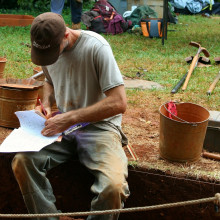
14:39 - Bronze Age textiles from Must Farm
Bronze Age textiles from Must Farm
with Dr Margarita Gleba, University of Cambridge
Must Farm, near Peterborough, has one of the best-preserved Bronze Age 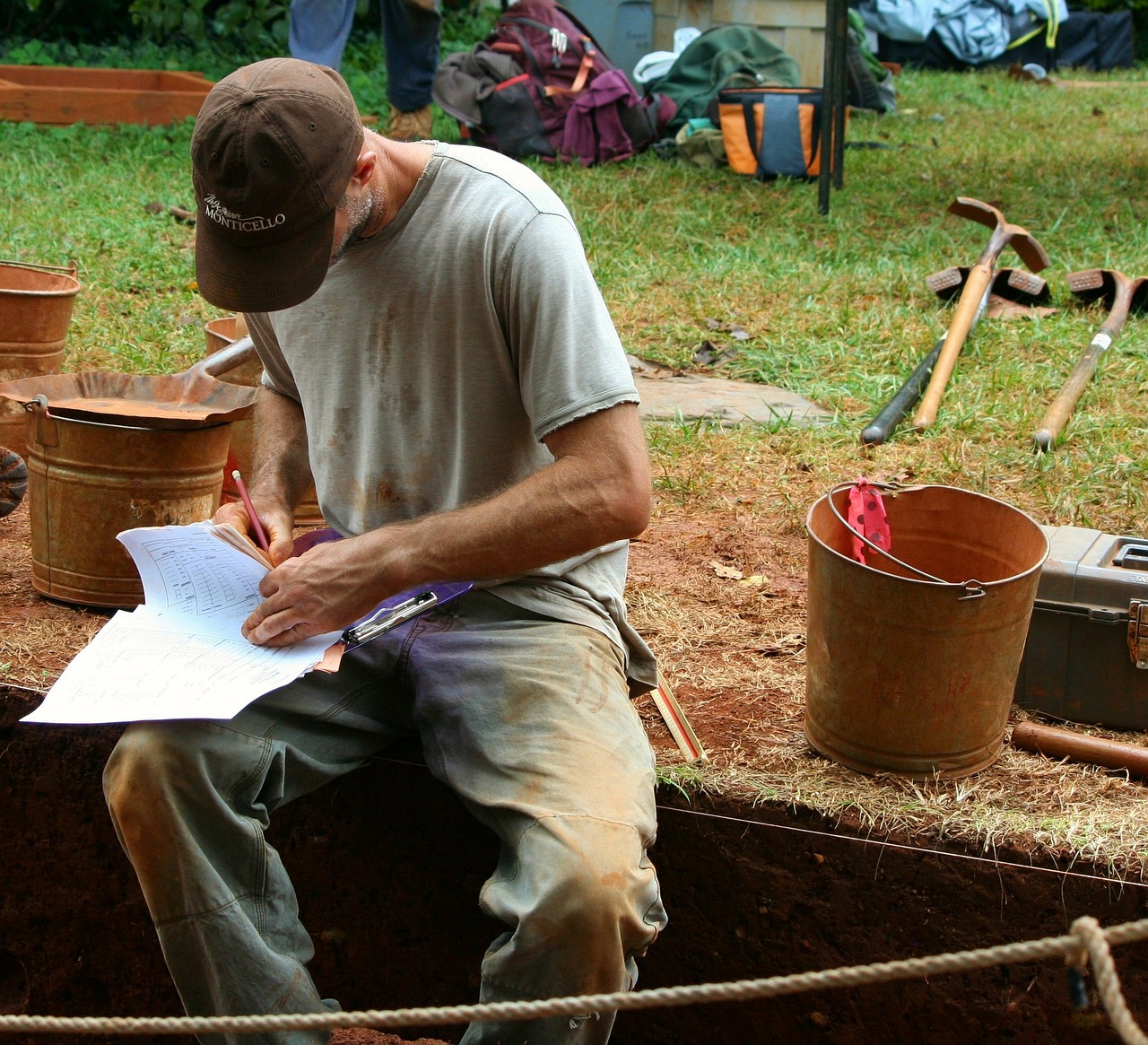 dwellings ever found. It's been described as the 'British Pompeii' and archaeologists have uncovered all sorts from pots, textiles and glass beads and even a massive wooden wheel that dates back to around one thousand years AD! And Dr Margarita Gleba has been involved in the dig, as she explained to Kat Arney...
dwellings ever found. It's been described as the 'British Pompeii' and archaeologists have uncovered all sorts from pots, textiles and glass beads and even a massive wooden wheel that dates back to around one thousand years AD! And Dr Margarita Gleba has been involved in the dig, as she explained to Kat Arney...
Margarita - It is a fantastic site. I was just there on Friday. I will be analysing fibres from any textile material that they find there. We have some textiles from the pilot dig that happened in 2006 and they are are quite spectacular, quite exceptional because, of course, textiles do not survive very frequently in Britain from that early period.
Kat - And by textiles, are we talking about clothes or how would you define a textile? What sort of things are we talking about?
Margarita - There are many different definitions and some people are more technical about it than others. So a more strict way of defining a textile is fabric or cloth that's made on a loom. But, of course, we have a lot of techniques from prehistory and Must Farm, of course, is a prehistoric site that were pre-loom. So a lot of fabrics were made simply by using hands and different kinds of techniques.
Chris - When you say Bronze Age - how old is that?
Margarita - In this particular case we're in the late Bronze Age and the dates are between 1300 and 900 BC.
Chris - So it's about 3,000 to almost 4,000 years ago, so it's pretty old?
Margarita - Exactly.
Kat - So tell me a little bit about some of the fabrics that have been found there. Because that's 3,000 years old - you'd think that things are going to disintegrate pretty quickly. What sort of things have been preserved?
Margarita - These are small fragments so often we cannot tell what their function was. The reason why they're preserved is because the site burned down and then everything ended up falling into water and being extinguished almost immediately. So this waterlogging, in combination with charring, is very good for the preservation of organic, particularly plant material. That's why we have excellent preservation of all wood on the site and of any kind of plant materials, in fact. And, in fact, all the textiles so far that have been excavated on this site are in plant materials - we don't have any wool for example.
Kat - When do you think we will get some of the exciting findings out? When can we look forward to hearing more about what's been found there?
Margarita - Well, I believe the next press release is happening on the 10th May and I'm hoping that there will be some information about some of the more recent finds but, of course, excavating is just one part of a very long process. After that there will be a lot of post-excavation work and that's when the real work of understanding the material will begin. So it may be a couple of years before we're really get all the data out of the material.
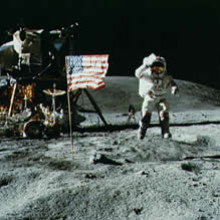
How did astronauts return from the moon?
Kat Arney put this question to Cambridge astronomer Matt Middleton...
Matt: - When the Apollo missions went to the moon. which is probably still regarded as mankind's greatest achievement, they went in a multistage vehicle. They started off in a Saturn 5 rocket - the most powerful rocket known to man - and that comprised of something called the command and service module, which included as part of it, a lunar module, and that lunar module was the thing that went down to the surface of the moon. The command and service module, or CSM, would orbit round the moon, they dumped off the lunar module with Neil and Buzz because, obviously, we were on first name terms, and they landed on the moon and then we all know what happened next.
Kat - They did the moon thing.
Matt - They did the moon thing, unless you are a conspiracy nut, you know.
Kat - They definitely did the moon thing.
Matt - They definitely did the moon thing, yes.
Kat - So how did they get them back off the from there?
Matt - Well. The beautiful gold foil thing that we all know and love which is the iconic image of people being on the moon. That's actually two parts. So in total it's called the descent module or descent stage, and that landed and then they got back inside and the top bit blasted off. So, the descent stage was actually used as a launch pad and then you have the ascent stage which fired propellant, and the actual propellant is hypergolic. So, what basically happens is you have these two chemicals and as soon as they combine, instantly "boom" blast off. And so this thing took them back up to the command and service module and then the left lunar orbit. What's important to stress is, because the moon is so much smaller, they didn't need to have a Saturn 5 rocket plus they weren't taking all that kit with them.
Chris - Because the gravity's lower?
Matt - It is lower. The escape velocity is five times smaller on the moon than it is on the earth.
Margarita - So the descent module is still on the moon?
Matt - It is - yes, yes.
Chris - There's a whole lot of litter that we've left up there - isn't there?
Matt - We have left a terrible amount of litter.
Margarita - You know there is something now being developed called "space archaeology." I think that's a prime.
Matt - Oh really! Is that where you're going next?
Chris - The fact that there are nice artifacts up there.
Margarita - There are so many objects now orbiting the earth that the people are seriously talking about starting space archeology.
Matt - Oh yes.
Chris - There's a lovely headline isn't there "footprints that no wind has ever blown away" and they are there on the moon's surface from those first space walks.
Matt - They also left really cool stuff up there. There's a reflecting thing so you can actually fire a laser and work out the distance to the moon.
Chris - Yes the laser goes every day - doesn't it? We know the moon is moving 2 cms away from the earth every year owing to the fact that the time it takes the light to get there and come back is stretching out.
Matt - Yes, and I think that's fantastic. It's still a legacy that I think we can all be proud of as humans.

What are thunderbugs?
Kat Arney put this question to ecologist Felicity Bedford...
Felicity: - Yes. They're something I come across quite a lot when I'm doing my field work because they're found all across agricultural land. It's something called a Thrip. You might have known about them as being called thunderflies, storm bugs, corn flies, corn lice, thunder blights, harvest flies. There's so many names for these things because they do get everywhere.
Chris - I thought I had a dead pixel on my monitor on my computer..,
Felicity - Yes, don't squish them.
Chris - ... because I had this black spot and then I realised that the dead pixel was moving and it had got behind the glass and in front of the LCD on my computer screen and there was a dead thing in there. And then it did die and I have got a dead pixel but it's not a dead pixel - it's actually a thunderbug that's died in the screen in front of a pixel but it looks the same size and shape.
Kat - So what are they doing? They're these little insects - are they helpful or are they just pests and why do they like getting into these tight spots?
Felicity - There's about 6,000 species of Thrip and you wouldn't really be able to tell the difference between them across the world because they are so small. But, looking at them under a microscope you would start to see slight differences between them and they're basically feeding on plants across all of those different systems . So what you're going to get is some of them are beneficial, some of them are helping with pollination but that's quite unusual - they're actually largely pests because they damage the developing bits of the plant. The ones which are attracted to your bright colours are flower thrips. So they go into the buds of flowers and that's where they feed and reproduce.
Kat - So they're attracted to different kinds of things so maybe Chris' computer one - is that a computer thrip or.
Chris - Is it the colours that get them? Is it because my computer screen is a bright source of light and.
Felicity - Exactly.
Chris - ... that's why they just make a B-line - if that's the right word to use - a thrip line into the screen.
Felicity - So yes. Insects that need to feed on flowers are attracted to bright colours. It's a fairly straightforward relationship between flowers and insects from that sense.
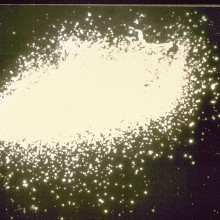
Does wearing copper reduce infection rates?
Kat Arney put this question to Chris Smith, Here's a clip of the interview Tom's referring to. This was an interview that Chris Did with professor Bill Keevil from the University of Southampton in February...
Bill - Copper's a very interesting metal. It's actually quite reactive and we've found that with bacteria, it stops the bacteria respiring - so they stop breathing - it can punch holes in their cell membranes so that their constituents leak out, and it can destroy their DNA. We developed a model system where we simulated a hand touch onto a surface and put in several million MRSA onto those surfaces. They started to die literally as soon as they touched the surface.
Chris - Your hypothesis then is that when the bugs are on that surface, the copper is producing all of these chemicals, the bugs find themselves in a really hostile environment and it just destroys them.
Bill - Absolutely correct. And, in fact,iIt's been very exciting that partly out of the lab work we started, people have been putting different copper alloys in hospitals all over the world and, in every case, they're reporting something like a 90% reduction in the number of bugs you can actually detect on the copper surfaces. And what's really exciting - a study was undertaken - two hospitals in New York, one in Charleston and there, looking at all the data, they're reporting a 58% reduction in infection rates. So I think that's a classic example of translation from the laboratory into the realworld setting. Kat - Chris you're a virologist, what's going on, is wearing a metal bracelet like Tom's helping to cut down his infection risk?
Chris - The answer is, I'm sorry to say Tom, probably not for a number of reasons. One - health control policies certainly in NHS hospitals in the UK dictate that you're not allowed to wear wrist things like watches or bangles or bracelet, and you're allowed one gold band on one finger, like your wedding ring. Now the reason for doing that is that if you put bits of jewellry and other stuff round your hands, it actually impairs your ability to wash your hands properly. And the copper is really only toxic, it appears, when it's in close apposition to the bacteria. In other words, the bacteria on that surface. There's not enough copper, although your arm very often does go that attractive shade of green if you wear one of these things. There's not enough copper probably leaking onto the skin to make much difference to your microbial burden and you, therefore, probably will just succumb to poorer washing and hand hygiene than if you don't wear the bangle. So the best advice is probably not to wear it and just wash your hands really well.
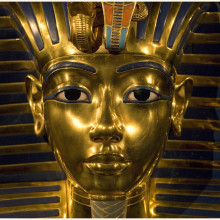
What happened to Tutankhamun's heart?
Kat Arney put this question to Cambridge Archaeologist Margarita Gleba...
Margarita - Well, ancient Egyptians obviously believed in the possibility of attaining life after death and all the preparations that went into getting the body mummified and put into specific kinds of tomb, and surrounded by various kinds of materials and imagery that would perpetuate their life in all eternity. The mummification process took about 70 days, so you wouldn't be burying your mummy immediately. The body was prepared and cleaned and immersed in specific kinds of substances, such as natron, so that it would prevent the putrefaction. And because the aim of mummification was to transform the body for its new existence, rather than to maintain it as it has been in life, internal parts of the body could be removed without really endangering the person's chances of survival in the afterlife and, depending on the organ, they would have been treated differently.
Kat - So it didn't actually matter that this guy didn't have a heart?
Margarita - Well it actually did because the heart had a special kind of significance. It was usually left in place because it was considered the centre of intelligence because the heart was used in what is known as "the weighing of the heart ceremony" and if you were not a very nice person in life, then you would not have been let into the afterlife.
Kat - So this guy's kind of in trouble then. Would he not get in the afterlife?
Margarita - Well. So the study that Sarah is referring to came out a couple of years ago and that was done by Chris Norton who concluded, after studying scans of the mummy of Tutankhamun, that he was killed by a chariot crash. Now, a further investigation a year later, actually concluded that it's quite unlikely that that would have happened because scans of most of the bones indicated that all of the fractures of the bones occurred after Tutankhamun's death. And.
Chris - Was that just careless undertaking?
Kat - Smacking him around a bit.He's dead it doesn't matter!
Margarita - Well, we don't know but that might actually come in the theory that we're coming to.
Chris - How would they know these bones are broken after death and not during the death process?
Margarita - You can tell usually by the different accumulations of calcification on the fractures of the bones. And so the latest theory is that actually he did not die in a chariot crash. In fact, he probably didn't walk very well without aid so he would not have been riding a chariot. The latest theory, the reason why he may have not had a heart is because he is represented in death as Osiris. And Osiris was dismantled and his heart buried and, therefore, he would not have needed it in death so.
Kat - They mystery is solved.
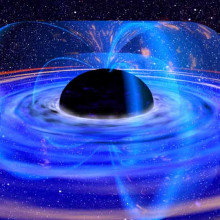
What are jets in black holes?
Kat Arney put this question to Cambridge astronomer Matt Middleton... Matt - Jets are the most powerful events in the universe - jets from black holes. They carry away huge amounts of material and very often they're moving extremely close to the speed of light - say 99.9% of the speed of light. I'm sure that we all roughly remember around our GCSEs - something like this, where you could work out the kinetic energy of a moving body from 0.5 x mv2. Take that mass - oh Kat's wondering about it, alright.
Kat - I'm a biologist.
Matt - You're a biologist - you don't do equations. So if you take the mass that's coming out of it, take the velocity, clearly there's a huge amount of energy. And, in fact, there's a very nearby jet coming from a supermassive black hole called CenA, and the amount of power that is coming from that is 10 to the 12 times the power that is coming from the sun.
Chris - How do we know the jets there?
Matt - You can see it. So these jets in particular emit everything from optical all the way through to x-rays and probably beyond.
Chris - Ah, so the stuff coming out which is radiating this.
Matt - Absolutely. It radiates across.
Chris - So is it just radiation or is it particles. What is in the jet?
Matt - So it is particles and those particles are radiating. So essentially for those who are on a geek out for some science you have magnetic fields and you have electrons that spiral around those magnetic fields and, because they're constantly changing direction, they have acceleration.
Chris - Why are they firing out of the black hole and where from the black hole are they coming from?
Matt - Okay. So, the point is these are not actually from inside the black hole. The old adage of, you genuinely cannot get out of a black hole, is true. You cannot escape from it. And in fact, we should point people to the podcast. But they're coming from close to the black hole and, in fact, in another nearby supermassive black hole, people have been able to use radio interferometers. That's when you have multiple radio dishes, and they provide a very high angular resolution view of these structures and they've been able to work out that it's coming from about 5 times the size of the black hole, above the black hole. So that's incredibly close.
Chris - Do we know what concentrates the material into a jet? Why isn't it just sort of spinning round, getting excited, and then just radiating in all directions like our sun radiates radiation at us in all directions.
Matt - Sure. So if you ever ask an astronomer a question they can't answer, they'll always say magnetic fields or dust. It turns out it is magnetic fields and it genuinely is the answer. We know there are magnetic fields there because we see what we call synchrotron emissions, so these are the electrons spiralling around magnetic field lines. And that's why you basically collimate all this emission that's coming away from the black hole through these magnetic fields, so it actually does look like a jet. It's perhaps worth mentioning that there's aren't the only particles that we see from black holes, there's also Hawking radiation and that's when the black hole itself decays. So you have a particle that's created on the event horizon. It's actually is a particle-antiparticle pair. One of them goes into the black hole, the other one gets kicked out and that's how black holes decay.
Chris - The black hole loses a little bit of mass and that makes it shrink?
Matt - Absolutely!
Chris - So black holes should evaporate over time?
Matt - And that's why we're not going to be destroyed by the Large Hadron Collider.
Kat - Hooray!
Chris - That's reassuring to know isn't it Kat?
Kat - It is reassuring.
Chris - Thanks Matt.

Why are Caribbean tides so small?
Kat Arney put this to Chris Smith...
Chris - Okay. The likely reason for this is the same reason you don't see very high tides in other parts of the earth's surface, and that is it's all down to how the water moves.
The reason water moves around the earth is because the earth is spinning inside the orbit of the moon, the moon is gravitationally attracting the bulge of water towards itself on the side of the earth closest to the moon, and there's also another bulge on the opposite side of the earth.
The earth then turns through that bulge, which effectively moves across the surface of the earth and it's going to interact with land masses. So if you have a certain coastal configuration that means that the water all heaps up in one place because it's got nowhere to go, you're going to see a bigger tide there than if the water can distribute and flatten out easily.
A really good example of this is the Severn Estuary in the Bristol Channel. You've got the patch of the coastline of Wales and the north of Devon and Cornwall which narrows in like a funnel to a very narrow patch of coast. All of the incoming tide gets funnelled into a very small part of the estuary which heaps up the water there, drives a lot of water inland very fast and then it comes out again, and that's you get these very big tides.
In some places, when I was in Australia last year, I went to somewhere where some of the highest tropical tides are, in Northwestern Australia, up where the horizontal falls are, and it's between 10 and 13 metres the tide there.
So that's the reason - it's because the water having little place to go and being funnelled from a massive ocean into a relatively narrow section of the earth's surface and, if you have a lot of water entering a small area, you're going to get a very radical tide height change.
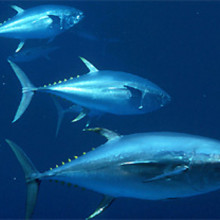
34:55 - Moves to cut yellowfin tuna fishing
Moves to cut yellowfin tuna fishing
with Felicity Bedford, University of Cambridge
In the news this week, major supermarket chains have signed a letter which is campaigning to cut yellowfin tuna catches by 20% in the Indian Ocean, in the hope of preventing fish stocks collapsing. This is ahead of Indian Ocean Tuna Commission meeting in May. Europe imports the most seafood in the world and is the main market for tuna too, consuming nearly a quarter of the world's  production. But will stopping the problem at the source be enough? Kat Arney put this to ecologist Felicity Bedford...
production. But will stopping the problem at the source be enough? Kat Arney put this to ecologist Felicity Bedford...
Felicity - So, the fish stock for tuna are generally in a pretty poor condition all around the world and there are several different species of tuna that are under concern as well, and this is just one of them. To make the point - this hasn't actually been protected yet. This is just the supermarkets and several other bodies that the World Wildlife Foundation have all banding together to say this is what should be done and that's a really good step forward. So hopefully, in May when that meeting happens, they'll be able to put into place some legislation that will protect those stocks. So, we're talking specifically about the Indian Ocean yellowfin tuna because they have only been threatened in the last few years. They're only just now becoming overfished and, hopefully, being able to change that fairly rapidly would mean that we could move forward and actually restore those stocks.
Kat - Because it does feel like we've been talking about tuna and tuna overfishing for so long. So how is it that this new species of tuna is now becoming a problem? Should we just stop eating tuna - why are we still eating it?
Felicity - So what we've basically done is change from the bluefin tuna, the biggest of the tuna, and we're shifting down the food chain a little bit. These are all predatory fish but we're just decreasing the size of the tuna, the quality of the tuna that we're buying because they're becoming increasingly rare. So, there's something called the skipjack tuna, which is actually doing okay at the moment relative to the other species. We're basically just destroying one and moving on to the next, which is a pretty bad situation to be in. You'd think we'd learn from our previous mistakes.
Kat - So, with this kind of meeting that's happening in May talking about cutting tuna consumption - this yellowfin catches by 20%. Is that actually going to be enough?
Felicity - It might be. It very much depends on the state of the stocks that they are at the moment - how bad has the situation become. With fishing, it's really difficult to tell what these stocks currently are and the fact that we're flagging up this as a problem is a really good sign. But, with fishing, it's better to do it based on the amount of effort that you put into fishing. So, if you're putting in the same amount of effort but catching less fish, there's something that's going wrong here. So reducing the stock by 20% - it might work. It might be the right number, but it would be better to put things in place that are based on the amount of effort of fishing, rather than quantity.
Kat - And should we all basically eat less tuna - would that be a good idea?
Felicity - Yes. Changing to smaller fish like mackerel or sardines - the stuff which could be a bit more sustainable.
Kat - Certainly food for thought. Thanks very much Felicity.

Could CRISPR be used to fight cancer?
Kat Arney put this question to Dr Nick Peel from Cancer Research UK...
Nick - The idea of editing out those kinds of faults in DNA that might lead to cancer is an exciting possibility, but one that's a lot further away from what the scientists are currently using CRISPR for. What they are doing is taking things like - we know a particular gene fault increases the risk of a certain type of cancer say, but we don't really know what it's doing; why it might be having that effect. So what we can do now is start to edit in those precise faults that you do see in people's own genomes and patient's genomes, and really start to see what effect that's having on those cells and build a clearer picture. If that then one day becomes something you can do in people is a much further away discussion.
Kat - I guess it's also very useful for building models of cancer. We've seen in the past few years how we've gone from having cancer cells growing in the lab, to bits of tumours transplanted into animals, to actually making genetically engineered mice that can carry the faults that lead them to develop cancers. I suppose CRISPR is revolutionary here in that you can precision engineer those faults rather than going through the long and tedious process of traditional genetic engineering in mice?
Nick - Absolutely. One of the problems with the older techniques was scientists were spending years, and years, and years, only ever kind of getting to the top level of understanding of what one gene might be doing. You can now engineer in multiple different faults in different genes. We know that cancer is a really complicated disease where it's a whole constellation of genetic changes that are going to be behind the disease, you can now start to piece that picture together inside a mouse, or a cell, or a relevant kind of model, and get a much better understanding of how the disease works.
Kat - Dr Nick Peel from Cancer Research UK and you can find his blog post all about CRISPR and cancer at: scienceblog.cancerresearchuk.org.

Did cavemen cut their hair?
Kat Arney put this question to Cambridge archaeologist Margarita Gleba...
Margarita - Well the simple answer is with very sharp stone tools. We tend to imagine stone tools as something very crude but, in fact, if you think that all the stone tools found recently on the shores of Lake Turkana in Kenya, date to 3.3 million years ago. This is before the homo species and homo genus has been around.
Chris - But we didn't know they were cutting hair though - did we?
Margarita - Well, they probably weren't cutting hair at that point, but if you think that they've being doing this for 3 million years, that by late stone age, to which the question is referring, they were pretty good at making stone tools. So a very nice sharp flint knife or particularly obsidian, which is razor sharp.
Chris - How would we know when the first hair salon opened up in the stone age era? When did people begin to really chop hair do we think?
Margarita - Well we know humans lost their body hair, their fur effectively, about 2.5 to 3 million years ago when they moved from more forest habitat into open savannah and, in order to be able to hunt effectively in the hot climate, they lost fur. The only place where they didn't lose the hair was the scalp, the point of the hair on our scalp is to protect our head from the hot sun. Now when people moved into more temperate climates, the hair became less curly, became more straight, and became longer. Straight hair gets more ultraviolet through which you need in more temperate climates so that you produce vitamin D and have better bones and so on.
Kat - There's less sunshine so you need more light to get to your skin.
Margarita - But that said, there is also a theory that actually, a lot of this development has to do with sexual selection, since long and healthy hair is a sign of fertility and youth.
Chris - You need a good diet, lots of protein. You need to be healthy to grow your hair.
Margarita - You need to be able to take care of it as well.
Kat - But would people have taken care of it by cutting it or just by washing it, styling it?
Margarita - Well, that is the million dollar question, I suppose. What we do know is that by late paleolithic when we have the earliest representation.
Chris - When's that?
Margarita - So we're talking about 28 - 25 thousand years ago when we had the earliest representations of human beings; the majority of them are female. We do have fairly conclusive evidence that their hair was braided. So it would have been long and it would probably have been braided. Even if it was cut they were still keeping it quite long. Men on the other hand - the few representations we have - don't seem to show any hair on them. There may be various reasons for that but one of the explanations is that hair, when it's not washed the way that we wash it today with gazillions of shampoos, would emanate a lot of odour, and that would scare of the prey. So, if you were a hunter in the stone age, of course, you.
Chris - What about scare of mates as well, perhaps?
Margarita - Well - I wasn't going there.
Chris - More sensibly, will it not also be a home for parasites and so, by trimming it, you're giving fewer lice and nits a home?
Margarita - That is also a very accepted theory currently. That is the reason for cutting.
Chris - The critical thing to answer this original question is that we haven't got any evidence before say 25,000 years of what people did with their hair? We can only, therefore infer that perhaps they had the means - sharp tools.
Margarita - They had the means but whether they did it is an entirely different question.
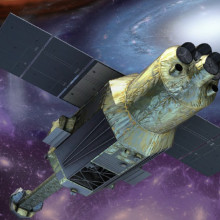
44:11 - Loss of the Hitomi satellite
Loss of the Hitomi satellite
with Dr Matt Middleton, University of Cambridge
Last month, a quarter of a billion dollar satellite called Hitomi was launched into 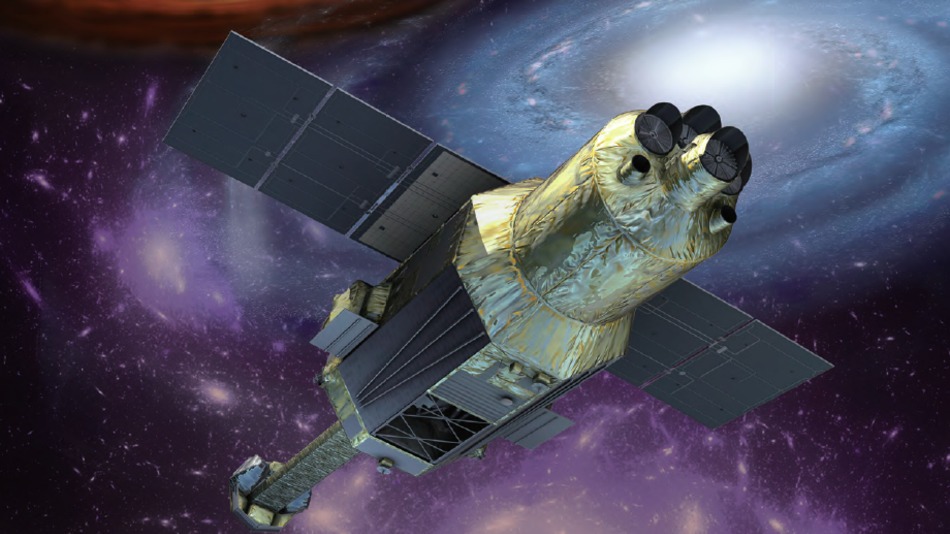 space to study supermassive black holes, neutron stars and galaxy clusters using gamma and x-rays. But something seems to have gone wrong - the Japanese have lost contact with their satellite and the US Joint Space Operations Center has detected space debris floating around it. Matt Middleton explained to Kat Arney what happened...
space to study supermassive black holes, neutron stars and galaxy clusters using gamma and x-rays. But something seems to have gone wrong - the Japanese have lost contact with their satellite and the US Joint Space Operations Center has detected space debris floating around it. Matt Middleton explained to Kat Arney what happened...
Matt - Well, I hate to be a pessimist, but it doesn't look good. Just for the listeners, it's worth mentioning that this was going to be the next in a line of Japanese, or JAXA which is their version of NASA, x-ray satellites - this was going to be the sixth. And on board it had this amazing instrument called a microcalorimeter and, essentially, it allowed us to look, not with great spatial resolution, but incredible energy resolution. So emissions from neutron stars, black holes; they emit over a wide range of energies - you're allowed to look at very, very fine energies with this. So it was going to revolutionise the way we look at certain objects however, there was a problem.
It was launched on the 17th February and contact was lost on the 26th March, which is a terribly short lifespan for something which cost 273 million US Dollars. So, as you said, the US Joint Space Operations Centre observed a break-up into ten pieces on the 26th March and, in fact, it's now ten. There's no evidence that the spacecraft was hit by debris even though there is a lot in orbit and possibilities were that it could have been helium gas explosion, in fact, you need helium to cool this brand new form of detector. Or battery explosion, or a stuck open buster, or something like and they thought the recovery may require months, but there were still optimistic. However, the news is less great now. So it turns out they're pretty certain what happened was there was an instrument that told the spacecraft that it was rolling, but there wasn't a roll. And so the thrusters kicked in to counteract this invisible roll and so it started actually rolling. And then it really started to get out of hand and so went into safe mode which causes the most powerful thrusters to kick this into an even more powerful roll and it just spun round and round and then threw itself to pieces - sadly. So the outlook is pretty bleak. They are still trying to, and if you'd spent 273 million dollars on an instrument, you would probably also try and regain contact with it. So the future is pretty sad. I mean the hope is that they will maybe build a new satellite fairly quickly. The detector is already there but it's a pretty dark day, I'm afraid. Pretty sad news, I'm afraid.
Kat - How often does think of thing happen that instruments that are sent off into space go AWOL or explode?
Matt - Well, explode is kind of rare. You generally build in a lot of redundant systems. You build in a lot of safeguards so if this sort of thing happens you can gain contact with it and shut it down. I can tell you immediately - Keppler, a very famous mission that was in the news recently also lost contact with NASA but that's now been summoned, as it were, and is now back hopefully doing science in the next few months. They don't know the cause of that but it was nothing like as damaging as what happened to Hitomi. Also Xmen Newton, another satellite - they lost contact with that. It does happen. You know these things are incredibly complicated bits of kit and they're in the most harsh environment we can possibly imagine, so bad things have a tendency to happen, sadly.
Kat - And in terms of the research that's being done - how long did it take to build this instrument? Has it been a massive setback in terms of the science?
Matt - To build the detector not so much because it's been proven. I should mention that although it was only in orbit for a few weeks, it has actually done some science. And the belief is - I can't say, I'm not at liberty to do so - but the science it will do from that data is incredible. Absolutely, draw-droppingly, beautiful.
Kat - So just from those few weeks up there it's managed to get some good stuff?
Matt - It's done some fantastic stuff - it really has. It's so sad that we lost something that could do that sort of science. And in terms of making a satellite - you plan decades in advance. We're planning for an instrument called Athena that's going to be launched in 2028, and that got greenlit a couple of years ago. So it's a very, very long road to putting a satellite into orbit to do this science.
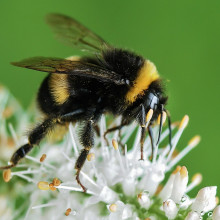
How do bumblebees cope with altitude?
Kat Arney put this question to Cambridge ecologist, Felicity Bedford...
Felicity - It's more to do with the way that their wings move than a specific physiological adaptation for them to be able to fly, as such. So the ways that bees fly generally is a little bit different to how you might expect. Their wings don't actually go up and down - they go backwards and forwards and the lift is generated because the wings are at a slight angle and they create little vortices at the ends of their wings. Low pressured air lifts the bees. So that's how they fly and that's one of the things which cause a little bit of confusion when people were looking at bees early on and trying to say how on earth do these things get off the ground.
Kat - There's that whole thing about - Oww bumblebees shouldn't be able to fly, ha ha - but clearly they can.
Felicity - Yes. A myth started by an entomologist of all people. But they can fly, they're very good at it and it's because of this almost helicopter-like movement that they do that. So when they're at high altitudes - there's a paper by a group that took some bees into the lab, put those bees into different air pressures inside containers and they looked at the way their wings were moving. And bees in the lower pressures were actually beating at the same rate, so same number of beats. Those beats were taking a larger arc, they were scooping more air effectively with that wing beat, so they were going further with their wings to generate more lift.
Kat - Does this mean that they're having to use more energy? Do bees in the Himalayas get tireder? Do they need to eat more nectar?
Felicity - I guess they would do. They're certainly doing more movement for each wing beat. Their wings are moving faster within each wing beat to cover that slightly further distance and effectively use more of the minimal air that is there.
Chris - Why is the frequency the same? Why didn't they just beat their wings faster - is that a nervous system pre-programmed thing that the wings have to beat at a certain rate, therefore they can't change that?
Felicity - I don't know. I guess it something to do with bees do vary the way that they fly generally. They're over-engineered so that they can carry pollen when they're foraging and they can carry a lot more than their own body weight, in fact despite them being this large insects with small wings and, of course, they need to be able to adapt their flight to escape predators as well. So there is that adaptation within bumble bees generally even without taking this altitude into account and this must be one of the ways in which they can compensate.

Why didn't my drink fall over?
Kat Arney put this question to Chris Smith...
Kat - Okay. So we are going to reenact your scenario. Here we have a plastic cup in the studio with some water and Chris is standing very close to me. Alright, here we go.
Chris - Drop the cup straight down onto the floor?
Kat - Yes. Wow. Okay that did not exactly work. So the cup kind of bounced on the floor, all the water has come out but, presumably Chris, if you had made a flat hit on the floor, would it have stayed upright - what are the chances of that happening?
Chris - Okay. Our experiment is slightly cheaty because this is a little plasticky cup. It's not a decent, high density, heavy cardboard cup. But, the fact is, it's all down to basic physics. If you have got a cup and you have got a liquid in it, you're going to hold that cup upright, and you can see whether it's upright by whether the liquid looks straight in the cup because you don't want to spill your coffee. If you then drop the cup; if you drop it having held it upright, then the only force acting on it is going to be gravity, which is going to pull it down in a straight line. It's therefore likely to hit the ground in a straight line and, as Isaac Newton taught us, everything is going to keep at a constant velocity unless some kind of force acts on it. Now if there's no force pushing the cup to one side or the other, then actually all the force is the acceleration due to gravity straight down. If the cup lands straight on the ground - now it's got a lot of kinetic energy and, therefore momentum. It's going to hit the ground, there's going to be compression of both the liquid by itself, hitting itself, and the cardboard in the cup. There will probably then be some elastic recoil as the cup goes back straight again, this will apply a force back on the liquid. Because the cup's circular, all things being equal, it will have stretched the cup outward when it landed, so the cup will rebound inwards and it will just squirt the liquid straight back up symmetrically in a column up in the air. So it should all coming flying out all over the lady next door and possibly all over you Kat. We just probably didn't drop this cup very well.
Kat - Also we've dropped it onto a carpet and a carpet isn't necessarily a flat surface.
Chris - Ah, but it is only water - not coffee. So it will be alright.










Comments
Add a comment